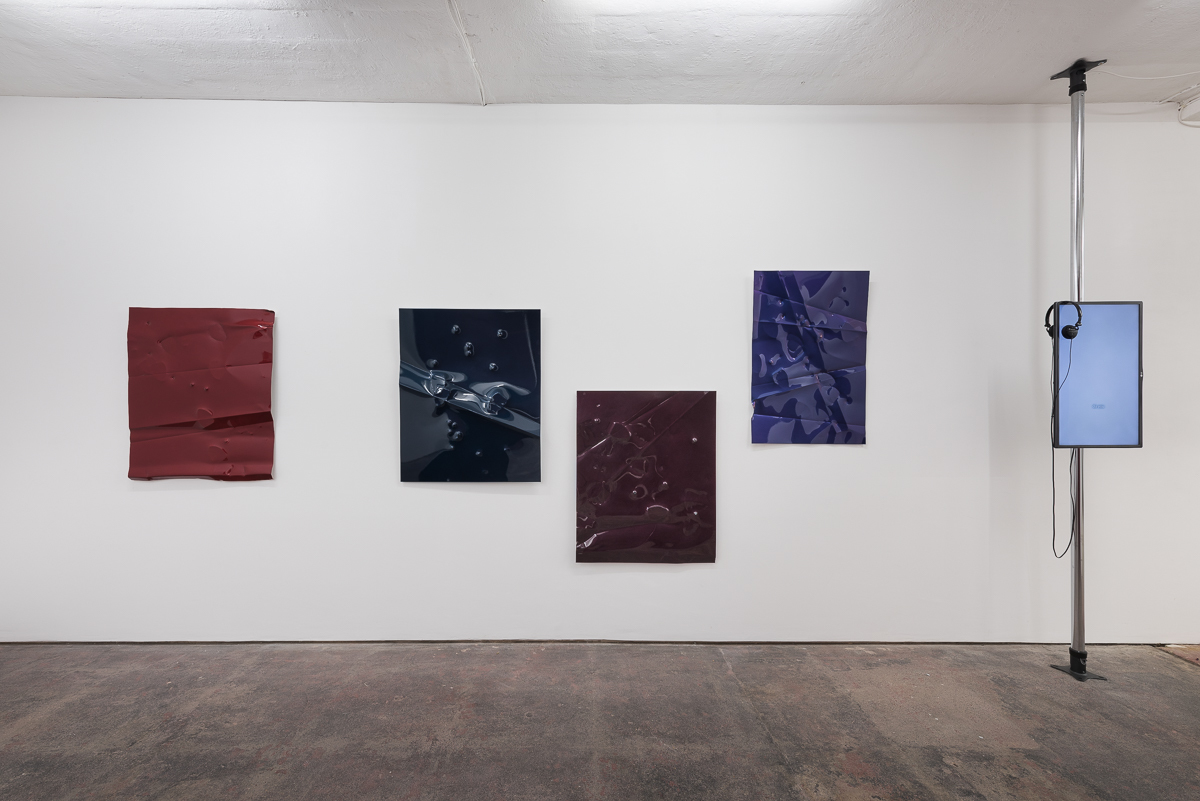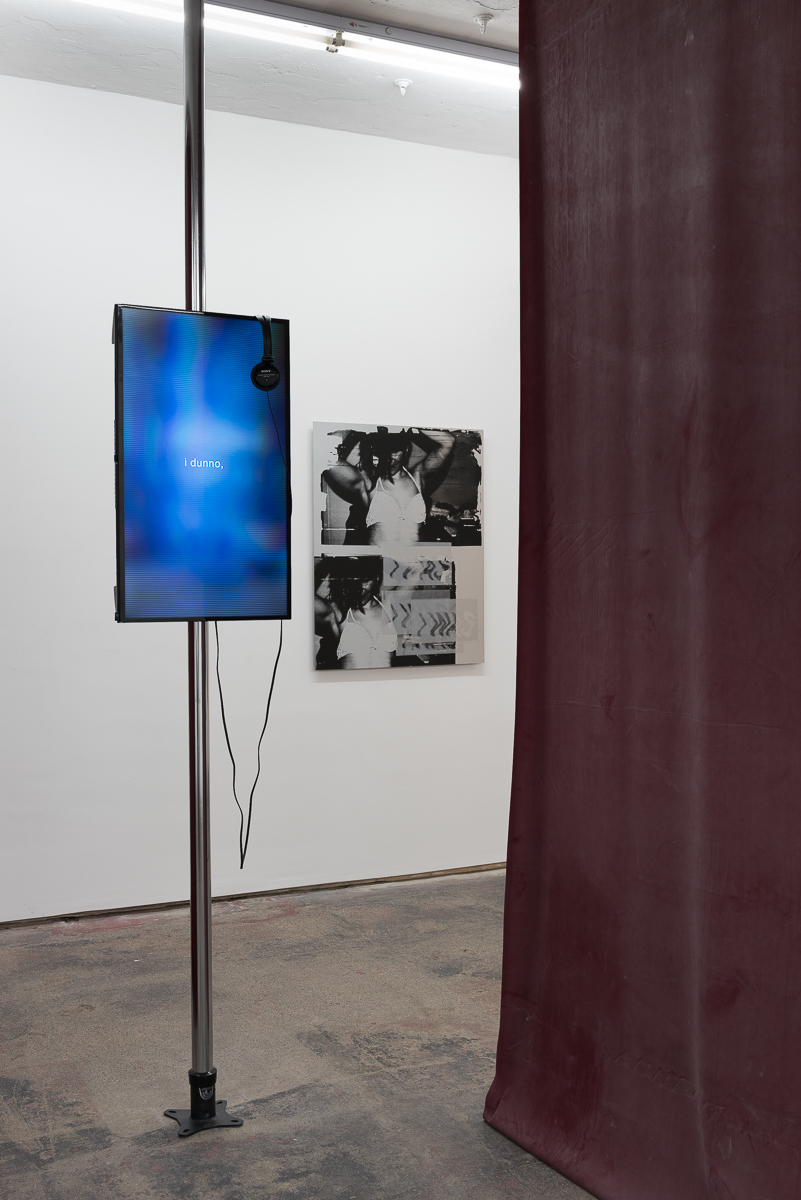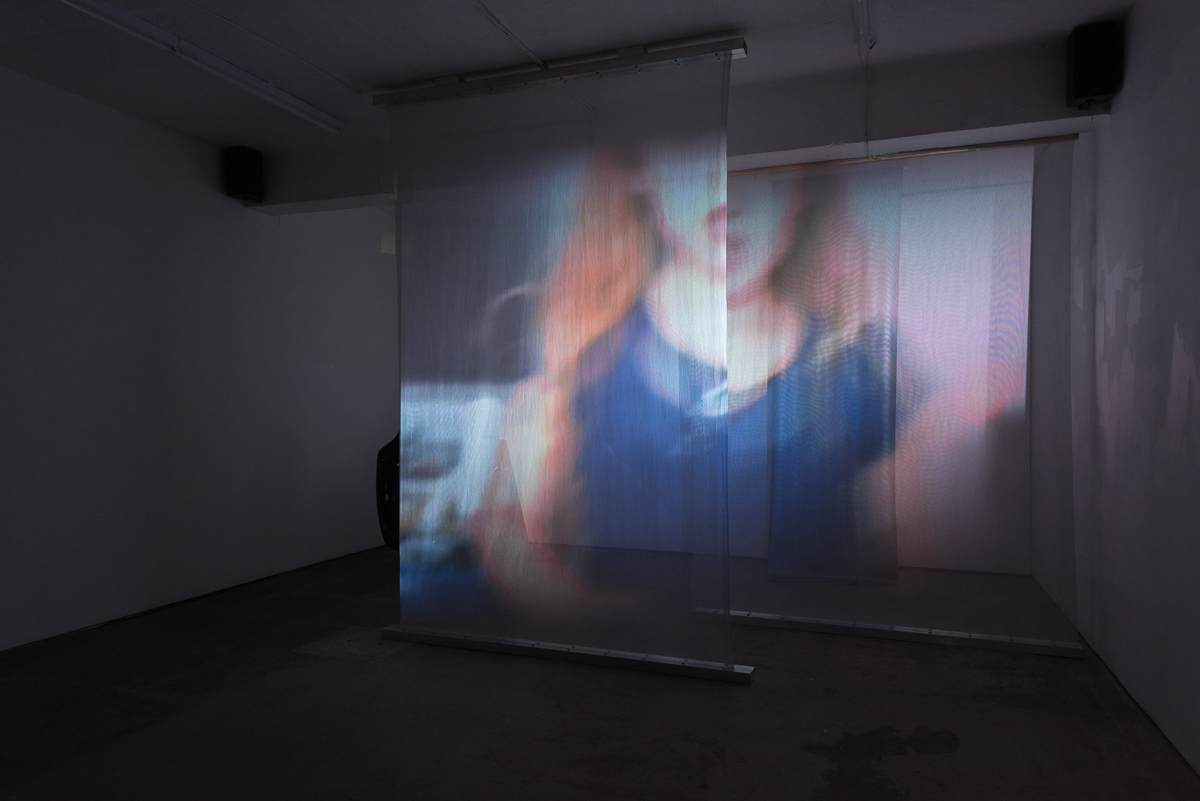Hannah Perry was born in 1984 in Chester, in the North West England and grew up in the spectacle of the 90s youth culture, where urban and suburban street cultures culminated with the launch of MTV UK in 1997. In her new series of work, currently on display at Dalston’s Seventeen Gallery, the now London-based artist seems to have excavated the abstract and fragmented memories of her teenage years, from the personal to the cultural, and translated them into an immersive audio-visual experience. Rather than specific narratives, the pieces contain material or immaterial references to youth culture at the fringe in the 90s – a universe of high-shine cars, distant sound of trance music and endless amount of deep purple latex.
With solo shows at London institutions Zabludowicz and Cell Project Space, Hannah has become one of the city’s most tipped young artists, presenting abstract meditations of technology and the subconscious through the visual vocabulary of her generation: a universe in which friendship necklaces and broken iPhone screens become signifiers of nostalgia, affect, and sometimes, mourning. She graduated from Goldsmiths in 2009 and was later admitted to London’s Royal Academy of Arts, where she developed her distinct approach to collecting source material from her surroundings and life.

In her new solo-show Mercury Retrograde, what connect this vast material is a certain attempt of making sense of the many sensory memories that constitute the past, specifically Perry’s own early years in Northern England. Entering Dalston’s Seventeen Gallery, a soothing soundscape of amalgamated soundbites from television, music and distinct Northern accents fill the air, bringing you to some kind of abstract space of memory of long-gone experiences (Perry is an avid music-producer, and the sound-pieces resemble ambient mixtapes more than audio art pieces). In her wall-based work, she layers digital print on aluminium, like a projected memory subjectively imprinted on metal (while taking up Warholian-processes of image-making). It becomes clear that you’re not supposed to understand Perry’s memories, but to feel them, travelling as they are between moments of joy, contemplation, pain and boredom. Many titles refer to totally personal moments – Swimming Pool and Conversation or If Your Always Feeling OK or Hi Hannah, its Pocahontas, for example – and remind us that any attempt of depicting a cultural history is subjective.
The fragmented experience of memory truly crystallises in her works contructed from recordings from everyday life. My Brother (Paul Wardsley/Walton) stems from a conversation with her brother “a few Christmases back” about poetry and drug abuse – Perry as a silent listener, only capturing the moment and affirming her brother ever so often to make the story unfold. “I am constantly recording, photographing, taking images from different points of reference,” she explains, “this is continual and feeds into the work as and when I’m making it.” Through her work, she seems to argue that today, the whole experience of imprinting and recalling memory is shaped by the editing of media, whether that be through low-quality YouTube films, 5-second iPhone videos, accidental hour-long audio recordings or TV projections of white noise.

Her sculptures of aluminium and car autobody parts are brilliant in their violent expression, just as she uses latex to make heavy and looming curtains, dividing the room into smaller spaces. “The method of collating material from otherwise disparate sources is a way of making some kind of coherence out of the situation, tying up things to make sense of it,” she explains of her process. “The drive comes from something super personal, but with the choice of imagery, sound, etc. nods to where these issues may come from within a larger framework or social context.”
But beyond the pinning-down of her cultural sensory language, Hannah’s pieces contain an underlying concern with the human condition under and after technology. Her sound piece, Dr. Pharmaceuticals, recorded in an ashram in Pune during a recent trip to India, gives a fragment of a conversation with a spiritual guru, discussing spirituality and its implication in the enhancement of the body through science and technology. The ashram allowed no phones, internet or outside distraction during Perry’s stay, offering a complete cleansing from technological stimuli in a time of global hyper-connectivity – “which was actually a very intense experience,” Hannah adds.

As with the treatment of her cultural and personal memories, she refuses to take a political or moralistic stance: rather, her goal is to trace and compile these impressions through the language of the sensory. Several of her audio-pieces are shown via TV screens, showing nothing but the transcription of the spoken words – reiterating how technology can manipulate the senses through media.
This all culminates in the main piece in the show, Mercury Retrograde (I Believed in it at the Time), a massive video installation that splits up its projection to a series of screens at different range from the projector. The result is a kind of three-dimensional video of conscious and unconscious memory.

There is some sadness in Hannah Perry’s new solo show, but also lots of love and tribute to the specific environments of youth that, no matter where you’re from, become so formative in your personality. With Perry, there is no tension between the physical and the digital; rather, they feed into each other and derive from one another, and memory travels back and forth between the different layers of reality.
Credits
Text Jeppe Ugelvig
Images courtesy Seventeen Gallery
